
To whoever has been parking their car in Bailey Rhodes’ senior spot this year at Paul R. Wharton High, she’s got news for you:
Starting Monday, April 4, she’ll be needing it back.
Bailey, a 17-year-old senior at Wharton, will be returning to school for the first time since Sept. 2014, after winning battles against bone cancer and leukemia the last four years that left her immune system battered and susceptible and left her unable to wander far from her hospital rooms at Tampa General (TGH) and All Children’s hospitals, as well as her New Tampa home.
She took on all of her treatments with verve, foregoing any wallowing and telling anyone who would listen, ‘Let’s get this going, I have stuff to do and places to go.’”
She will finally get to park her car in one of those spaces in a couple of weeks.
“I can’t wait,’’ she says excitedly, her big brown eyes and even bigger spirit clearly joyful. “I’ve been waiting such a long time.”
Nearly two years, to be exact. September of 2014 was the last time that Bailey attended school, after her first fight with bone cancer and before her second against leukemia.
She has worked hard for this moment. While cancer ravaged her body, Bailey kept her mind focused on school. Although she couldn’t attend full classes, she took her courses through TGH’s Homebound programs, spending hours on the phone with teachers like Gary Lundgren, “Who I couldn’t have done this without,” she says, and others from Wharton.
Bailey has volunteered any way she could, as a mentor, talking to other families touched by cancer, working fashion shows with cancer patients and even working with special needs students when healthy enough.
She took both the SAT and ACT exams from a hospital room.
Now, she will be able to attend the final two months of her senior year, and graduate with her class.
“Everything she had to go through, it’s been kind of hard to watch,’’ says Bailey’s best friend, Jessica Korver. “It’s been hard to go to school and have her not be there. She was always the, ‘Let’s go to all the pep rallies’ person, and I’ve always been the stay home type of person. So, that’s been kind of hard. But she is soooo strong. That’s the one thing I really learned through this whole thing.”
A Tough Time
Bailey was first diagnosed in 2012 with osteosarcoma, a rare type of bone cancer with fewer than 20,000 cases nationwide per year.
The summer before her freshman year at Wharton, she had been experiencing pain in her left knee. Her mother Beth says that Bailey’s grandmother noticed a small rise in her knee, and a visit to the doctor and an MRI confirmed that she had a tumor.
“When I heard tumor, I was like, ‘Wait a minute…back it up,’’’ said Beth, a second-grade teacher at New Tampa’s Dr. Richard F. Pride Elementary.
The diagnosis came just two weeks after Bailey was told she no longer had to wear a back brace to bed to help with scoliosis while she was in middle school.
“I said, ‘I can’t catch a break’ in one breath, and then in the other, I said, ‘I guess this is God’s plan for me,’” Bailey says.
Although there were tears as family members showed up at the doctor’s office, Bailey was resolved to fight. She received six months of chemotherapy treatments, a full knee replacement and limb salvage of her tibia, and another seven months of chemo. Her weight at one point was down to 68 pounds, and she needed a feeding tube to help get her back to a healthier weight.
She was able to return to Wharton for the second nine-week period of her sophomore year in 2013. For a year, she was back to being a normal teenager, making the homecoming court, hanging out with friends, and even taking a family trip to Hawaii.
But, in August of 2014, she started noticing bruises in places where she had not bumped into anything or fallen down. After being in remission for a year, a routine lab test revealed bad news — secondary leukemia, which was the result of her previous chemotherapy, requiring that she receive a bone marrow transplant.
Bailey was shaken up. This fight would be more difficult, and require more resolve. She gritted her teeth through more chemo treatments as doctors searched for a bone marrow match.
“When I was re-diagnosed, I said, ‘This is going to suck, it’s going to be hard, but it’s only going to make you stronger,’’’ Bailey recalls. “We’re going to get through this. And then at the end, we are going to say, ‘What can we do with this now? What can we take from this, and make better?’”
After testing her family at Shands Hospital in Gainesville, doctors ended up finding a perfect match from a donor in Germany.
“A 10 out of 10 match,’’ said Bailey. “I thought that was the coolest thing ever, that somewhere out there, I don’t even know this person, and we’re not related, and they have the exact same bone marrow as me. That’s pretty cool.”
Bailey spent 80 more days in the hospital. Because her immune system was so fragile, she wasn’t allowed to leave her room. Immediate family was allowed in, but only in full hospital gowns and masks.
She was finally discharged Easter weekend of 2015,. For nine more months, she wasn’t allowed to leave her house. “I’ve been on house arrest,’’ she jokes.
She actually had to eat processed foods, like macaroni and cheese and ramen noodles, because there is less bacteria in them than say, unwashed lettuce and fruit. “You could have washed it really good, but I’m wasn’t taking that risk,’’ Beth says.
And, because her bone marrow donor had a peanut allergy, Bailey now also has a peanut allergy, so great discretion had to be used in her daily food choices.
The Big Announcement
On March 15, doctors told her she was once again all clear, and that she could return to school.
“I’m nervous, but I’m really excited,’’ Bailey says, and after noting that the last day of school is May 20, smiles as she reaches across the table to high-five Jessica.
Bailey also has a new cause: Code Gray, an informational service she wants to start for new cancer patients and their families, which she hopes to launch soon.
While at Tampa General Hospital the first time, Bailey had a port put in instead of an IV, and it was difficult to access. Located in her chest and at an angle, it was beneath the skin and reached by a needle. “Very painful,’’ she says. “The first time they tried to access it, it took 10 times.”
She was told to make sure the nurses used 1-inch needles, and one night a nurse was having difficulty accessing the port. Bailey asked her if she was using the right needle, and the nurse insisted she was.
“I only asked because it wasn’t working,’’ Bailey says.
As it turned out, it wasn’t the right needle, just as Bailey thought. On her chart that night, the nurse listed her as “Code Gray,” a designation for “unruly” patients.
The seed for Bailey’s Code Gray organization had been planted. As part of a project for her nursing assistant classes she was taking (since she was not allowed to go to clinicals), she researched mistakes made at hospitals, many she thinks could have been prevented had the patient and their family spoken up. But, most people, said Beth, are just content to let the doctors and nurses handle things.
In Bailey’s case, the family kept extensive journals and recorded every dose of medicine every time something was administered. “Highly recommended,’’ Beth said. “For me, it was therapeutic.”
Bailey spent a recent weekend designing pamphlets, which will contain information for new cancer patients and their families, including tips about dealing with your cancer treatment and talking to doctors and nurses without stepping on toes, as well as how to continue your schoolwork against great odds. She’d also like to create a website, hold some fund raisers and get the word out.
“I’m so passionate about it,’’ she says. “People don’t speak up because they don’t think they are knowledgeable enough to say anything to their doctor. But, if they have questions or doubts, they can — and should — say something.”
Bailey says she hopes Code Gray can help cancer patients. And, maybe one day, she will as well. She has been accepted into her dream school, the University of Florida in Gainesville, and wants to be a pediatrician. While she never thought about treating cancer patients before her own struggles with the disease, she wonders if she hasn’t been sent a sign.
“I always wanted to be a pediatrician, and they always asked me, ‘Do you want to go into oncology?,’’’ Bailey says. “I thought, there’s no way I could relive that every day. But then, this second time, it was like this is proving that I can relive it. Maybe that’s what it’s supposed to do.”


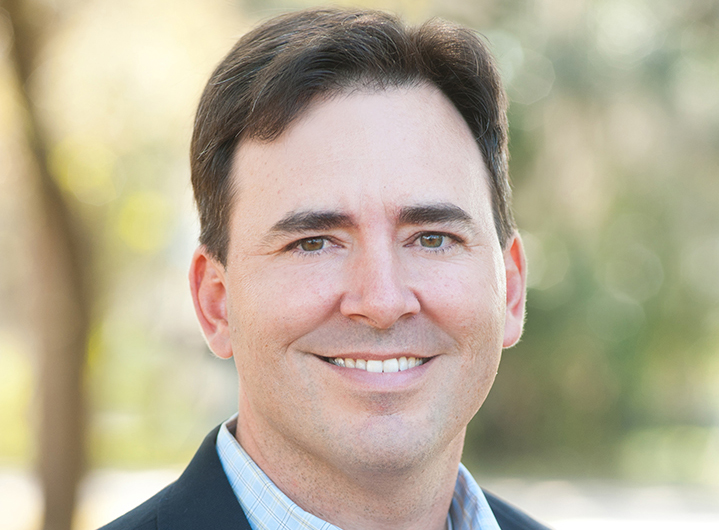


 Tampa Mayor Bob Buckhorn has faced some tough lines of questioning in his five years as the city’s head honcho, so taking a few softballs from the second graders at Lawton Chiles Elementary in Tampa Palms on March 8 was something of a welcome respite.
Tampa Mayor Bob Buckhorn has faced some tough lines of questioning in his five years as the city’s head honcho, so taking a few softballs from the second graders at Lawton Chiles Elementary in Tampa Palms on March 8 was something of a welcome respite.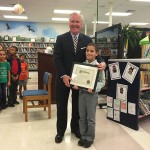
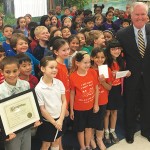
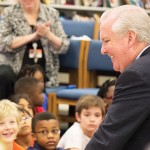

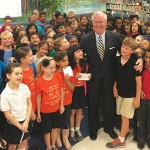
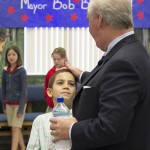
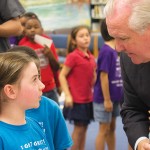
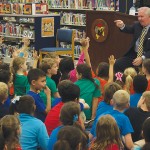
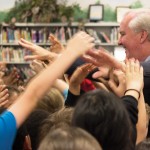

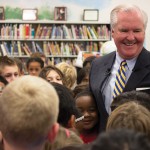
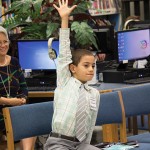

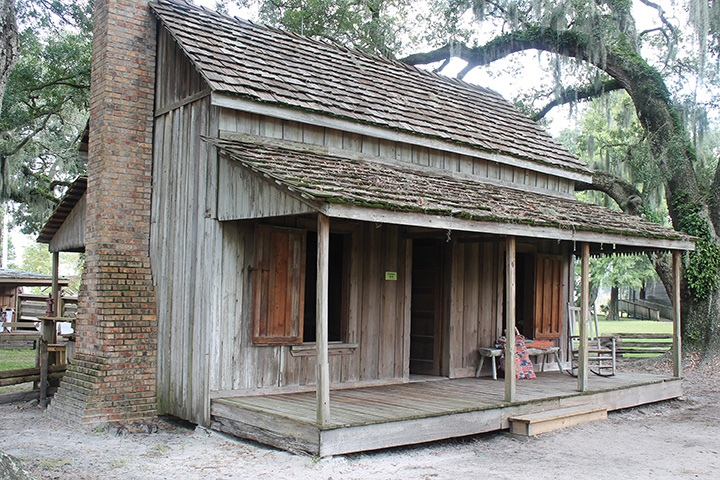


 ’s supervisor of elections. “I’ve never seen such interesting women,’’ Wise says.
’s supervisor of elections. “I’ve never seen such interesting women,’’ Wise says.